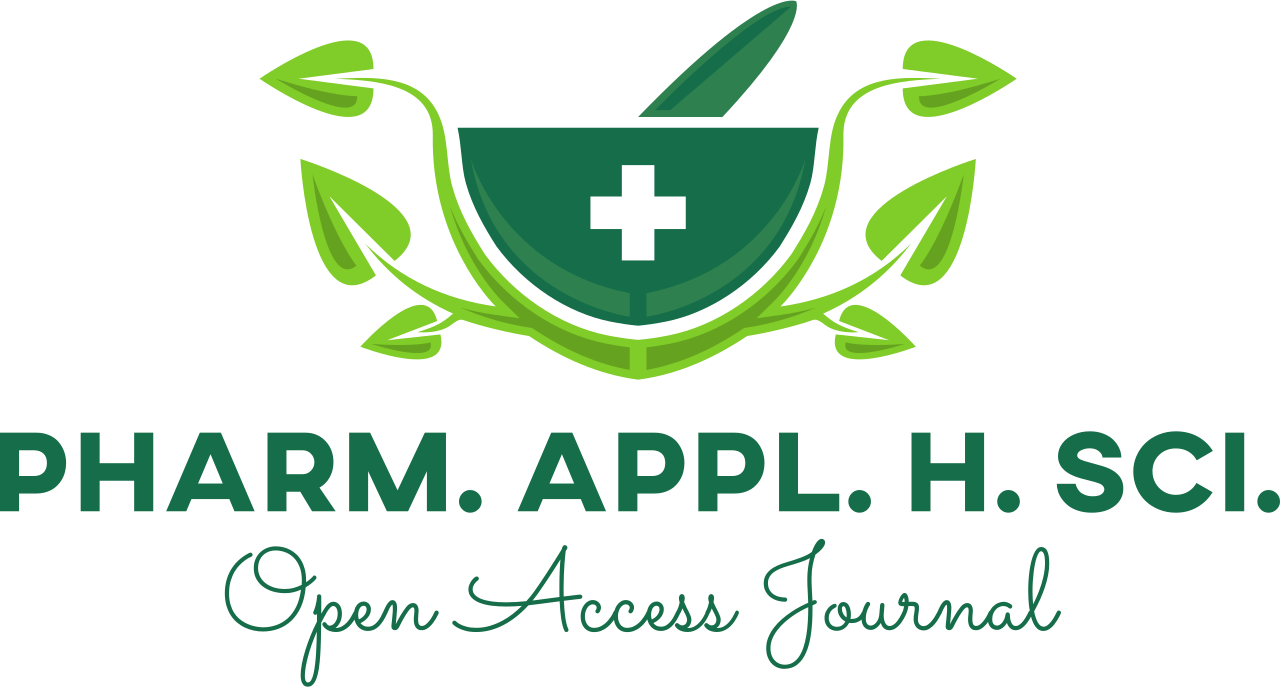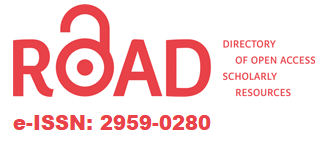Heavy Metal Toxicity and its Effect on Living Organisms
A Review in Toxicology Study
DOI:
https://doi.org/10.59480/phahs.v1i2.8Keywords:
Free radicals, Metal toxicity, Heavy metals, Oxidative stressAbstract
The pollution chain of heavy metals, such as industry, climate, soil, water, food and humans, nearly always assumes cyclical order in the climate. It is clear that the harmful consequences are caused by prolonged exposure to metalloids and heavy metals at minimum doses. It has been proven that heavy metals are harmful for environmental and human. Strong toxicity of a metal is recognized with a significant hazard and it is associated with many health hazards. They also antagonism component of the body, but metabolic activities can interact with metabolic processes at some times. By reduction exercises, few metals, such as aluminum, can be eliminated.
References
Guan DS, Chen YJ, Ruan GD. Study on heavy metal concentrations and the impact of human activity on them in urban and suburb soils of Guangzhou, Acta Scientiarum Naturalium Unversitatis Sunyatseni. 2001;4094):93-6.
Yan J, Ye ZX, Yan Y, Huang XP. Study on heavy metals distribution in atmospheric particulate matter on both sides of the Cheng- Ya Expressway. Sichuan environment. 2008;2(2): 19-21.
Christoforidis A, Stamatis N. Heavy metal contamination in street dust and roadside soil along the major national road in Kavala's region, Greece. Geoderma. 2009,151:257¬63.
Shi Xs. Molecular mechanisms of metal toxicity and carcinogenesis. Mol Cell Biochem. 2001;222:3-9.
Beyersmann D, Hartwig A. Carcinogenic metal compounds: recent insight into molecular and cellular mechanisms. Arch Toxicol. 2008; 82;8:493-512.
Arruti A, Fernandez-Olmo I, Irabien A. Evaluation of the contribution of local sources to trace metals levels in urban PM2.5 and PM10 in the Cantabria region (Northern Spain) J Environ Monit. 2010;12(7):1451-1458.
Showkat Ahmad Bhat, Tehseen Hassan, Sabhiya Majid1, Roohi Ashraf, Sonallah Kuchy. Environmental Pollution as Causative Agent for Cancer-AReview. Cancer Clin Res Rep, 2017 1:1 003.
Kapaj S, Peterson H, Liber K, & Bhattacharya P, Human health effects from chronic arsenic poisoning - a review, Journal of Environmental Science Health Part A, Environmental Science Engineering Toxic Hazard Substance Control, 41, 2006, 2399¬2428.
Arif Tasleem Jan, Mudsser Azam, Kehkashan Siddiqui, Arif Ali, Inho Choi, Qazi Mohd. Rizwanul Haq. Heavy Metals and Human Health: Mechanistic Insight into Toxicity and Counter Defense System of Antioxidants. Int J Mol Sci. 2015; 16;12: 29592-29630.
Casado-Martinez, M.C., B.D. Smith, S.N. Luoma and P.S. Rainbow,. Bioaccumulation of arsenic from water and sediment by a deposit-feeding polychaete (Arenicola marina): A biodynamic modelling approach. Aquat. Toxicol., 2010, 98: 34-43.
Mudhoo A, Sharma S.K, Garg V.K, & Tseng C.H, Arsenic: an overview of applications, health, and environmental concerns and removal processes, Critical Reviews in Environmental Science & Technology, 2011;41:435-519.
Walker AM, Stevens JJ, Ndebele K, Tchounwou PB. Arsenic trioxide modulates DNA synthesis and apoptosis in lung carcinoma cells. Intl J Environ Res Public Health. 2010, 7;5:1996-2007.
Matschullat J. Arsenic in the geosphere - a review. Sci Total Environ. 2002;49(1-3):297-312.
Chowdhury UK, Biswas BK, Chowdhury TR, Samanta G, Mandal BK, Basu GC, Chakraborti D. Groundwater arsenic contamination in Bangladesh and West Bengal, India. Environ Health Perspect. 2000;108(5):393-397.
Stevens JJ, Graham B, Walker AM, Tchounwou PB, Rogers C. The effects of arsenic trioxide on DNA synthesis and genotoxicity in human colon cancer cells. Intl J Environ Res Public Health. 2010;7(5):2018-2032.
Jacobs DE, Clickner RP, Zhou JY, et al. The prevalence of lead-based paint hazards in U.S. housing. Environ Health Perspect. 2002;110:A599-A606.
Gerhardsson L, Dahlin L, Knebel R, Schutz A. Blood lead concentration after a shotgun accident. Environ Health Perspect 2002;110(1):115-117.
Raymond A. Wuana, Felix E. Okieimen. Heavy Metals in Contaminated Soils: A Review of Sources, Chemistry, Risks and Best Available Strategies for Remediation. International Scholarly Research Network, Volume 2011, Article ID 402647, 20 pages.
Castro-Gonzalez M.I, & Mendez-Armenta M, Heavy metals: Implications associated to fish consumption, Environmental Toxicology & Pharmacology, 2008:263-271.
Brochin R, Leone S, Phillips D, Shepard N, Zisa D, Angerio A. The cellular effect of lead poisoning and its clinical picture. GUJHS. 2008;5(2),1-8.
Brochin R , Leone S, Phillips D, Shepard N, Zisa D, Angerio A. The Cellular Effect of Lead Poisoning and Its Clinical Picture. The georgetown undergraduate journal of health sciences, 2008;5:2.
Sutton D, Tchounwou PB, Ninashvili N, Shen E. Mercury induces cytotoxicity, and transcriptionally activates stress genes in human liver carcinoma cells. Intl J Mol Sci. 2002;3(9):965-984.
Lash LH, Putt DA, Hueni SE, Payton S, Zwicki J. Interactive toxicity of inorganic mercury and trichloroethylene in rat and human proximal tubules (Effects of apoptosis, necrosis, and glutathione status) Toxicol Appl Pharmacol. 2007;221(3):349- 362.
Trasande L, Landrigan PJ, Schechter C. Public health and economic consequences of methyl mercury toxicity to the developing brain. Environ Health Perspect. 2005;113(5):590-596.
Zahir A, Rizwi SJ, Haq SK, Khan RH. Low dose mercury toxicity and human health. Environ Toxicol Pharmacol. 2005;20:351-360.
Clarkson TW, Magos L, Myers GJ. The toxicology of mercury-current exposures and clinical manifestations. New Engl J Med. 2003;349:1731-1737.
Sarkar BA. Mercury in the environment: Effects on health and reproduction. Rev Environ Health. 2005;20:39-56.
Holmes P, Hames KAF, Levy LS. Is low- level mercury exposure of concern to human health, Sci Total Environ. 2009;408:171¬182.
Alina M, Azrina A, Mohd Yunus AS, Mohd Zakiuddin S, Mohd Izuan Eff endi H, Muhammad Rizal R. Heavy metals (mercury, arsenic, cadmium, plumbum) in selected marine fi sh and shellfi sh along the Straits of Malacca. Int Food Res J.2012;19(1):135¬140.
Morais S, Costa FG, Pereira ML. Heavy metals and human health, in Environmental health - emerging issues and practice (Oosthuizen J ed). 2012:227-246, InTech.
Kevin M R, Ernest MW, Jr, Miaozong Wu, Chris G, Eric RB. Environmental Mercury and Its Toxic Effects. J Prev Med Public Health. 2014;47(2):74-83.
Haley BE. Mercury toxicity: genetic susceptibility and synergistic effects. Medical Veritas. 2005;2(2):535-42.
Valko M, Morris H, Cronin MTD. Metals, Toxicity, and oxidative Stress. Curr Medici Chem. 2005;12:1161-1208.
Zhang YL, Zhao YC, Wang JX, Zhu HD, Liu QF, Fan YG, et al. Effect of environmental exposure to cadmium on pregnancy outcome and fetal growth: a study on healthy pregnant women in China. J Environ Sci Health B. 2004, 39:2507-2515.
Bernard A. Cadmium & its adverse effects on human health. Indian J Med Res. 2008, 128;4: 557-64.
Suwei Wang and Xianglin Shi. Molecular mechanisms of metal toxicity and carcinogenesis. Molecular and Cellular Biochemistry 2001, 34; 222 : 3-9.
Sabolic I, Breljak D, Skarica M, Herak- Kramberger CM. Role of metallothionein in cadmium traffic and toxicity in kidneys and other mammalian organs. Biometals. 2010, 23;5 :897-926.
Castagnetto JM, Hennessy SW, Roberts VA, Getzoff ED, Tainer JA, Pique ME. (2002). MDB: the metalloprotein database and browser at the Scripps Research Institute. Nucleic Acids Res 2002, 30;1: 379-382.
Lech, T., & Sadlik, J. K. (2017). Cadmium Concentration in Human Autopsy Tissues. Biological Trace Element Research, 179(2), 172–177.
Schaefer, H. R., Dennis, S., & Fitzpatrick, S. (2020). Cadmium: Mitigation strategies to reduce dietary exposure. Journal of Food Science, 85(2), 260–267.
K. Cheng, H. Z. Tian, D. Zhao, L. Lu, Y. Wang, J. Chen, X. G. Liu, W. X. Jia, Z. Huang. Atmospheric emission inventory of cadmium from anthropogenic sources. Int. J. Environ. Sci. Technol. 2014, 11:605-616.
Chakraborty S, Dutta AR, Sural S, Gupta D, Sen S. Ailing bones and failing kidneys: a case of chronic cadmium toxicity. Ann Clin Biochem 2013, 50;5: 492-495.
Mohanty M, Kumar Patra H. Eff ect of ionic and chelate assisted hexavalent chromium on mung bean seedlings (Vigna Radiata l. Wilczek. Var k-851) during seedling growth. JSPB. 2013;9(2): 232-241.
Joshia N, Paliwala A, Pantb V. Toxicity of heavy metals and its management through phytoremediation. Octa Journal of Environmental Research.2016;4(2):168-180.
Jacobs JA, Testa SM. Overview of chromium (VI) in the environment: background and history. In: Guertin J, Jacobs JA, Avakian CP, editors. Chromium (VI) Handbook. Boca Raton, Fl: CRC Press; 2005:1-22.
H. Oliveira, “Chromium as an environmental pollutant: insights on induced plant toxicity,” Journal of Botany.2012:8.
Zayed AM, Terry N. Chromium in the environment: factors affecting biological remediation. Plant and Soil 249.2003:139–156.
Kumar M., Puri A, A review of permissible limits of drinking water, Indian J. 2012;16:40-44
Albretsen J. The toxicity of iron, an essential element; Veterinary medicine. 2006:82¬90
Hershko C. Mechanism of iron toxicity. Food and Nutrition Bulletin, 28:4 (supplement) 2007, The United Nations University.
Matthew H and Lawson AAH, Treatment of Common Acute Poisonings. Edinburgh and London: Livingstone.1979:129-138.
Hillman RS. Chapter 54. Hematopoietic agents: growth factors, minerals, and vitamins, in Goodman & Gilman's The Pharmacological Basis of Therapeutics, 10th Edition (Hardman JG, Limbird LE, Gilman AG eds).2001:1487-1518, New York: McGraw-Hill 2001.
Downloads
Published
How to Cite
Issue
Section
License
Copyright (c) 2022 Dldar S. Ismael, Muharam Y. Mohammed, Tariq W. Sadeq

This work is licensed under a Creative Commons Attribution-NonCommercial-NoDerivatives 4.0 International License.
All PHAHS Journal articles are published under the terms of the Creative Commons Attribution-NonCommercial-NoDerivatives 4.0 International License (CC BY-NC-ND 4.0) which allows authors retain copyright and others may not use the material for commercial purposes. A commercial use is one primarily intended for commercial advantage or monetary compensation. If others remix, transform, or build upon the material, they may not distribute the modified material.
Copyright on any research article published by the PHAHS Open Access journal is retained by the author(s). Authors also grant any third party the right to use the article freely as long as its original authors, citation details and publisher are identified.
Use of the article in whole or part in any medium requires attribution suitable in form and content as follows: [Title of Article/Author/Journal Title and Volume/Issue. Copyright (c) [year] [copyright owner as specified in the Journal]. Links to the final article on PHAHS website are encouraged where applicable.
The CC BY-NC-ND 4.0 Creative Commons Attribution License does not affect the moral rights of authors, including without limitation the right not to have their work subjected to derogatory treatment. It also does not affect any other rights held by authors or third parties in the article, including trademark or patent rights, or the rights of privacy and publicity. Use of the article must not assert or imply, whether implicitly or explicitly, any connection with, endorsement or sponsorship of such use by the author, publisher or any other party associated with the article.










